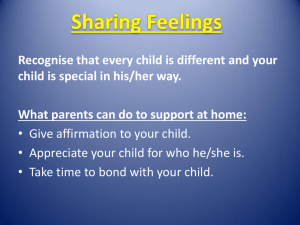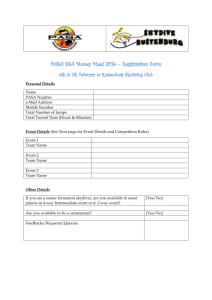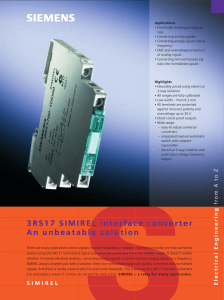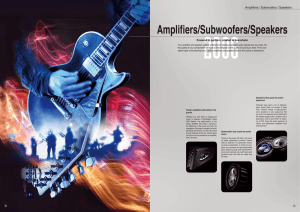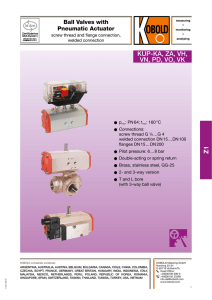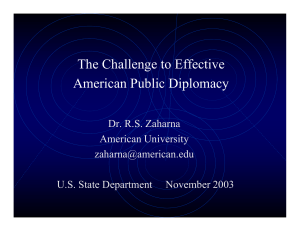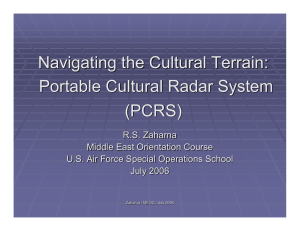Chapter 3 - Routledge
advertisement
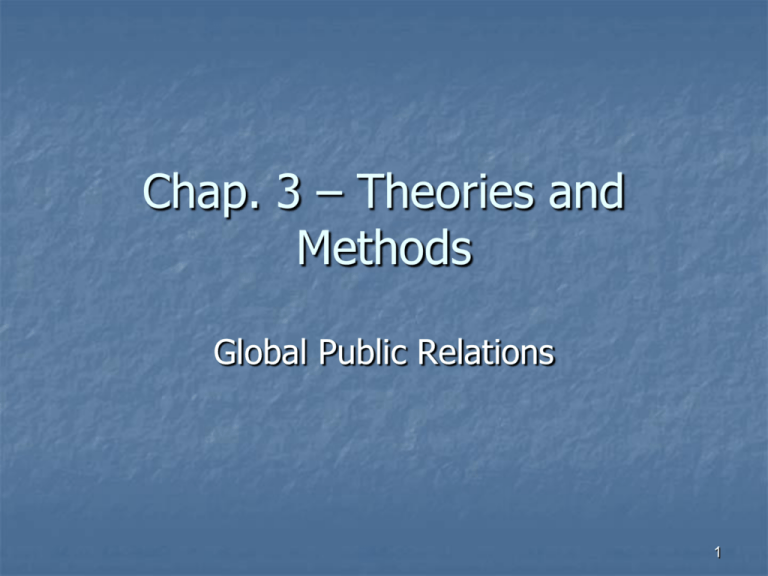
Chap. 3 – Theories and Methods Global Public Relations 1 What good is a theory? Describe, explain and predict cause/effect relationships In communication: no absolutes, but useful central tendencies International PR encompasses theories at all levels of communication from intrapersonal through international mass communication 2 Four basic categories in PR articles Theoretically based Case studies Based on theory or practice principles Country studies Often borrowed from other disciplines Growing library but ongoing need “Think pieces” Essays reserved for established scholars 3 Evolutionary models (Grunig & Hunt) Press agentry Public information 2-way asymmetric 2 way symmetric } 1- way models 4 For example: Lee (2004) Based on premise that 2-way symmetric model allows for changes in either organization or public (or both) Her study sought factors affecting org. image among Hong Kong consumers Survey results show need to focus on public to enhance org. reputation (2-way symmetric model) 5 Most communication theories are western- (esp. U.S.-) based Selective Perception Schema Propaganda Bullet Symmetry Congruiy Gatekeeping Source Credibility Fear Appeals Innoculation Two-step Flow Diffusion Agenda Setting Knowledge-gap Limited Effects Cultivation Spiral of Silence Uses and Gratifications Theories of the Press Agents of Power Media Richness Risk of assuming theories hold up in other cultural contexts! 6 Example – Van Leuven (1996) Examined Singapore and Malaysia Identified 3-phase development model instead of U.S.-spawned Grunig-Hunt models Nation-building Market development Regional interdependence Also applied to African studies 7 PR Functional Roles (Broom and Smith) Expert prescriber Communication facilitator Problem-solving process facilitator Communication technician } Management functions 8 Excellence Theory Involvement of PR in strategic management PR in the dominant coalition Integrated PR function PR as separate management function Senior management role 2-way symmetric model Symmetric internal communication Professional staff Organization mirrors external diversity 9 Van Leuven and Pratt’s proposals Potential for theory development Explore relationships between: Economic development and use of mass media Market development and persuasion as campaign aim Government stability and tolerance for dissent Government stability and attention to public opinion 10 Public Diplomacy and Evolutionary Models Freitag used Peru to find links Grunig-Hunt Models Public Diplomacy Models Press agentry Propaganda Public information Self-portrayal 2-way asymmetric Information 2-way symmetric Dialogue 11 Challenges to International PR Research Language Culture Some methods inappropriate Fit Including shared meaning Familiar methods may not work well Expense/time Disadvantages and potential for bias favoring scholars in developing nation 12 Survey Considerations Sampling challenges Survey instrument crafting Translation Cultural sensitivities Computer access 13 Content Analysis Issues Access to materials Legitimacy of comparisons across borders and cultures Coder skill and ability levels 14 Suitable Qualitative Methods Focus groups In-depth interviews Participant-observer Historical Case study Country study 15 Country Study Model (Zaharna) Descriptive categories Political Economic Mass media Infrastructures (education, transportation, etc.) Legal Social Cultural 16


